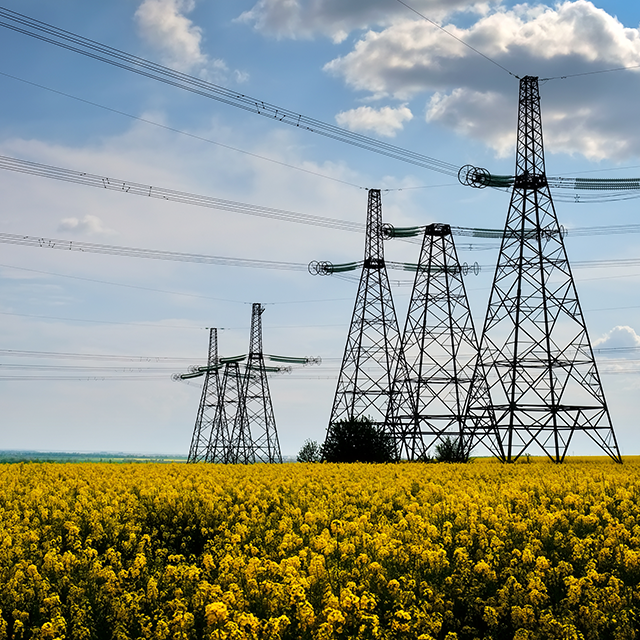This is the first in a two-part series on wellsite repurposing projects in the Canadian oilpatch. Part one provides background and context to the emergence of repurposing projects. Part two will look at challenges, uncertainties and what's next for such projects.
An Abundance of Dormant Sites
Regulatory policies, maturing basins, volatile markets and the COVID-19 pandemic are just some of the factors contributing to the increase in inactive wells in the Western Canadian Sedimentary Basin. It is estimated that there are approximately 97,000 inactive wells in Alberta and 41,000 in Saskatchewan, and these numbers are expected to rise as many participants in the oil and gas industry struggle to maintain production and operations in the current environment.
In the aftermath of the Redwater Energy decisions, and in light of the steadily increasing number of orphaned oil and gas sites, governments have been evaluating opportunities to modify their approaches to liability management and address the growing inactive well inventory. For instance, with the assistance of the federal government, all of the Western Canadian provinces have recently implemented programs aimed at facilitating the abandonment and reclamation of inactive and orphaned wells.
Repurposing Projects
In addition to such wellsite cleanup programs, another approach to managing inactive wells that is gaining increased traction is repurposing of the sites. The label of "repurposing" is increasingly being used broadly to refer to activities at a wellsite which: (a) use some combination of the existing surface rights, facilities and equipment, and/or the underlying exploitation rights; and (b) involve redeploying or "upcycling" such assets either in their own right or with the addition of further assets to create a benefit (as described in more detail below).
The following are a few potential examples of repurposing projects that we have seen so far in the Canadian oilpatch:
- Exploration and extraction of substances other than conventional petroleum or natural gas utilizing existing and/or new facilities, including:
- hydrogen (uses include refining petroleum, fertilizer and petrochemicals, electricity generation and storage, and transportation fuel);
- helium (uses include medicine and cryogenics balloons, aeronautic systems, welding and development of fiber-optic cables and other electronics); and
- lithium (uses include the development of batteries, aircraft manufacturing, and metallurgy).
- Utilization of existing surface sites for the installation of solar production facilities (the electricity generated from which can be used to power the operator's other facilities or in certain cases be sold on to the grid).
- Conversion of existing oil and gas wells for geothermal energy production.
- Compressed air energy storage (which can be utilized for solar or geothermal storage), CO2 sequestration/carbon capture storage, waste disposal or enhanced oil recovery.
Benefits and Advantages
Proponents of repurposing projects have cited a wide variety of economic benefits in pursuing the same, including the following:
- Revenues from repurposing project transactions can offset the wellsite owner's capex/operating costs during the decommissioning/reclamation period and be used to pay taxes, surface rentals and other amounts owing to Crown agencies or third parties.
- Some repurposing activities may (directly or indirectly) stabilize or decrease abandonment and remediation obligations.
- Repurposing projects may allow for continued development of a site, producing synergies including less workforce mobilization/ramp-up expenses and shared services that can perform functions on the repurposing site and adjacent properties.
- Repurposing projects may preserve jobs and create new opportunities for skilled trades and workers from the oilfield who have been furloughed or laid off.
- Repurposing projects may minimize environmental footprints through ensuring developments on existing sites utilizing existing infrastructure and access points.
In addition to the above economic benefits, repurposing projects may be considered as part and parcel of larger ESG or emission offset/reduction strategies for oil and gas and other industry participants, and may assist the site owner(s) in meeting other regulatory and stakeholder commitments.
Government Support
As repurposing projects are increasingly becoming viewed by governments as ways to contribute to environmental policy goals, Alberta and Saskatchewan have both begun to adopted some formalized grant or incentive programs to encourage such developments.
Some recent examples from Alberta include:
- E3 Metals: an Alberta-based lithium developer that recently obtained funding from Alberta Innovates through the Voucher Program (aimed at supporting small- to medium-sized enterprises with technologies in the mid-to-late developmental stages).
- RenuWell: an Alberta company looking to convert inactive wellsites for solar power generation recently received funding from the Municipal Community Generation Challenge, which is aimed at supporting renewable community generation projects that reduce emissions, diversify the locate economy and will result in data and knowledge that can be shared with other municipalities.
Further support for repurposing in Alberta is expected with the Alberta government's recent announcement of the creation of an expert panel and plan to help Alberta diversify its economy and become a world leader in mineral resource production.
In Saskatchewan, the Saskatchewan Petroleum Innovation Incentive offers transferable royalty/freehold production tax credits for qualified innovation commercialization projects, including projects that have the goal of "commercializing oil and gas production byproducts or waste", which may apply at least in respect of converting wells to produce lithium and hydrogen.
Our Energy and Regulatory teams have a robust understanding of the potential upsides and challenges associated with wellsite repurposing projects. For more information on how you can evaluate potential repurposing opportunities, please contact us.






















